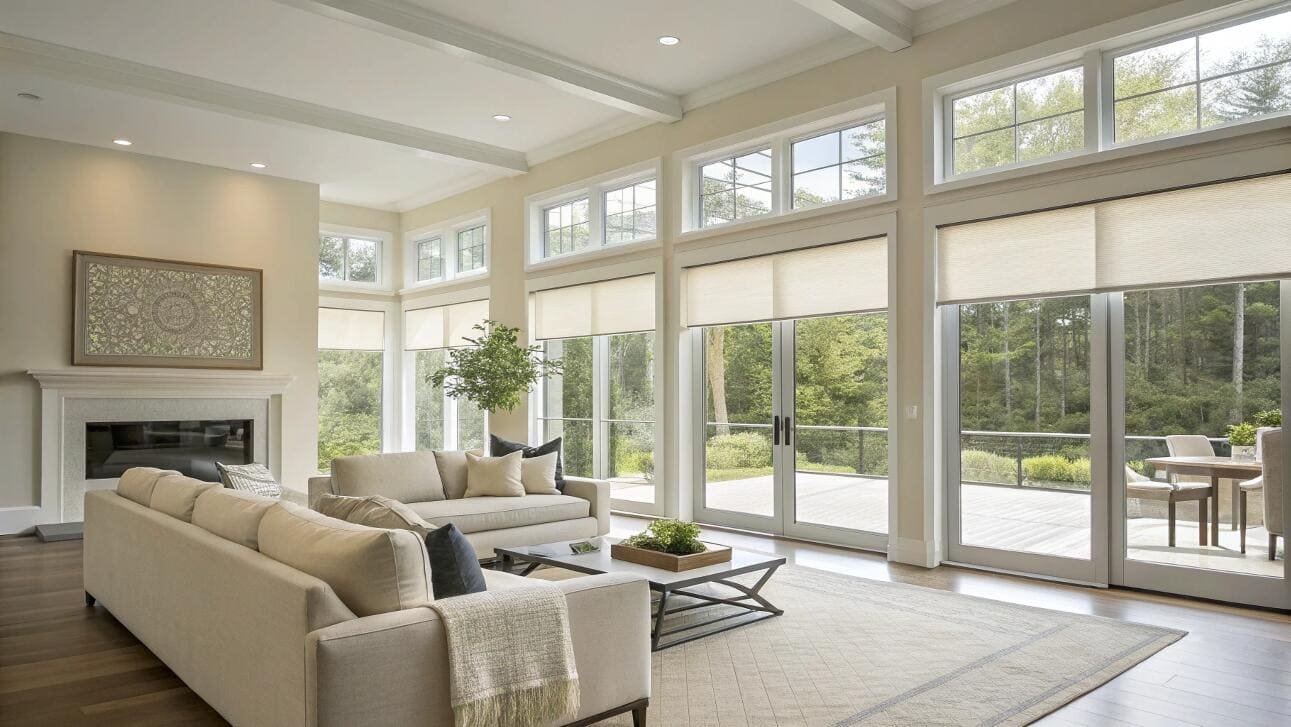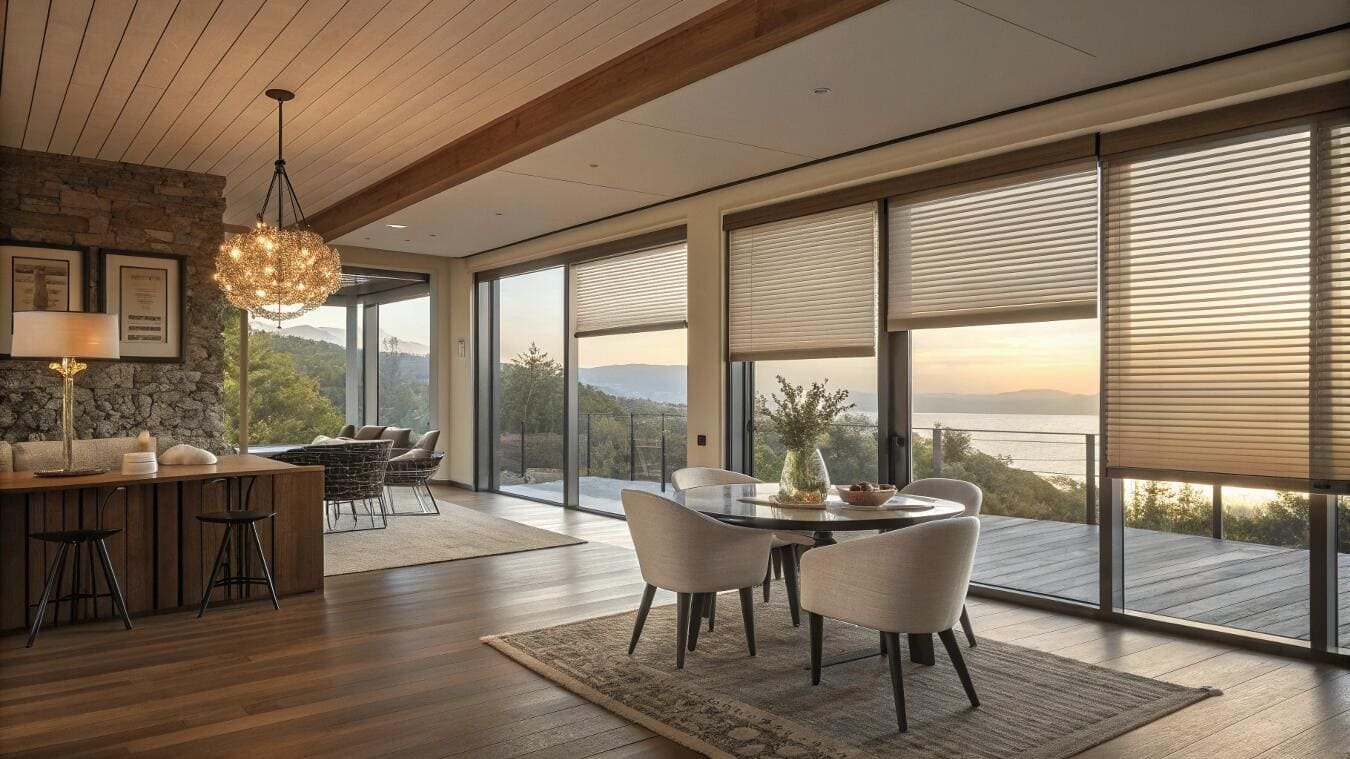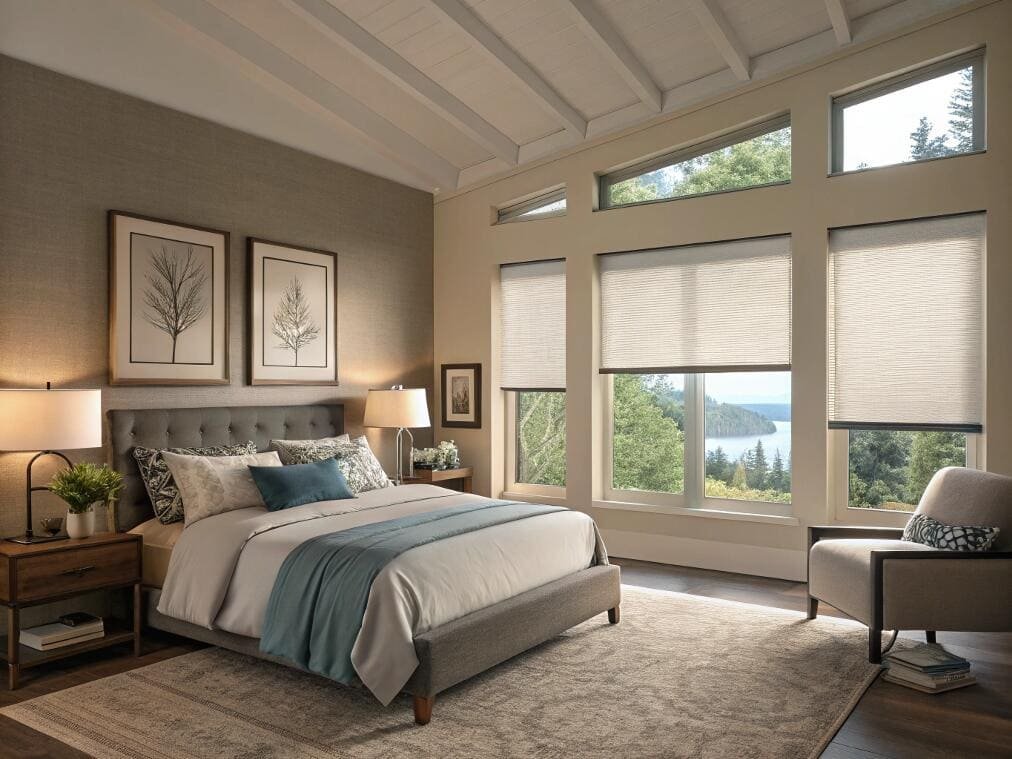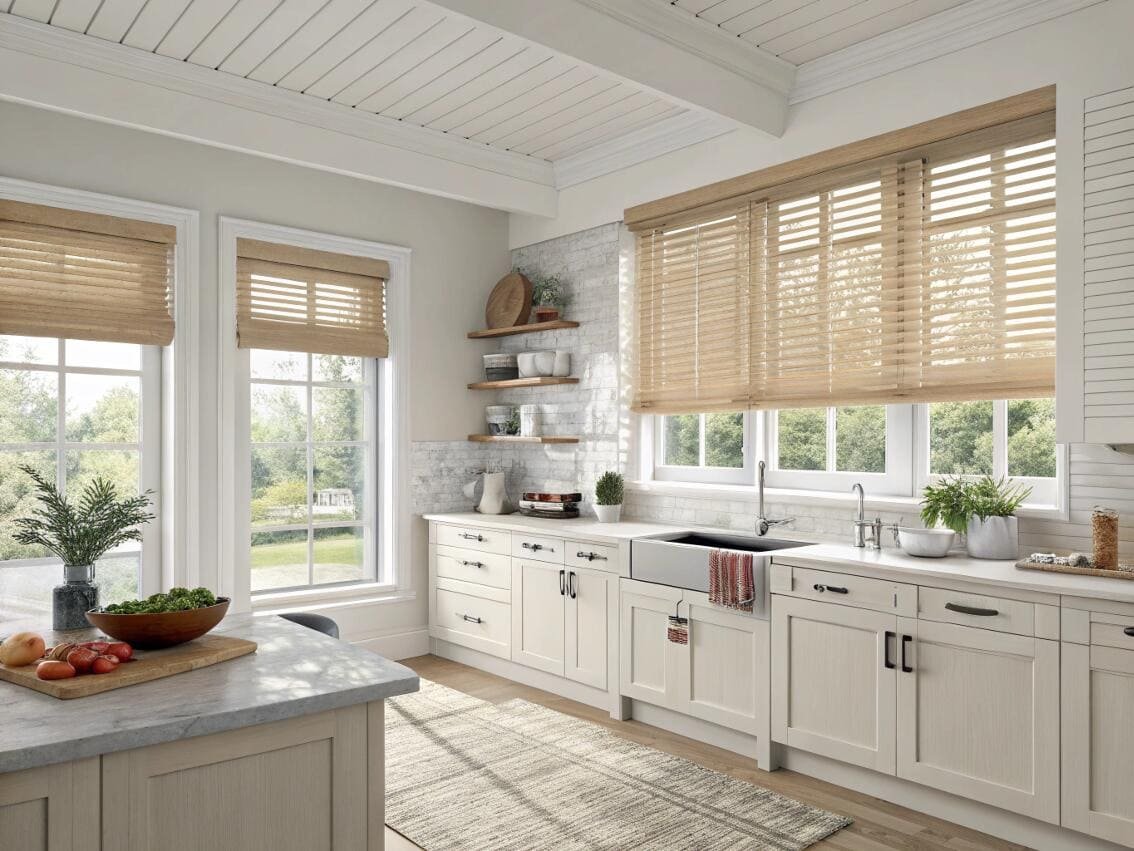Inaccurate window measurements can lead to costly ordering mistakes and major project delays. A single bad number derails your entire schedule, but following a professional process ensures a perfect fit.
Professionals measure accurately by taking three width measurements (top, middle, bottom) and three height measurements (left, middle, right) inside the window jamb. They use the smallest of each set of numbers and check diagonals to confirm the frame is square.

As a supplier for large projects, I've seen firsthand how a simple measurement error can have a domino effect, causing rework and blowing budgets. For a project buyer like Emma, whose reputation depends on smooth execution, precision isn't just a detail—it's everything. The process isn't complicated, but it must be followed with discipline. Let's break down the essential steps and professional considerations for getting your window measurements[^1] right every single time, from a single office to a multi-story facade.
How do professionals measure windows?
You need precise numbers for a perfect fit. Just taking one measurement is a recipe for disaster on a professional project. There is a simple, repeatable method that guarantees accuracy.
Professionals measure a window's width at the top, middle, and bottom, and its height at the left, middle, and right. They always use the smallest of these three measurements for both width and height to ensure the blind fits within the narrowest parts of the frame.

The core of professional measurement is the "measure three times" rule. For the width, you measure horizontally between the two side jambs—not the decorative trim—at the top, middle, and bottom of the window. For the height, you measure vertically from the head jamb down to the sill in three spots: left, middle, and right. Window frames are rarely perfectly square, so taking three measurements identifies the narrowest point. This smallest number is the one you use for your order; it guarantees the blind will fit and operate without catching. My personal rule is "measure twice, record once, and then check it again." This simple habit has saved my partners from countless data-entry errors.
| Measurement Step | Action | Purpose |
|---|---|---|
| 1. Width | Measure top, middle, and bottom inside the jambs. | Find the narrowest point. |
| 2. Height | Measure left, middle, and right, head to sill. | Find the shortest point. |
| 3. Final Number | Use the smallest width and smallest height. | Guarantees the shade will fit. |
| 4. Check Square | Measure both diagonals. | Verifies the frame is not skewed. |
How accurate do window measurements need to be?
Is "close enough" good enough for your window specifications? Even small inaccuracies can cause big installation problems, from light gaps to shades that won't operate. Precision is not optional.
Window measurements must be accurate to the nearest 1/8 inch. To be considered 'square,' the window's two diagonal measurements[^2] must be within 1/4 inch of each other. This accuracy ensures that a standard-sized replacement blind[^3] or window will fit correctly without issues.

On a job site, precision is your best friend. The 1/4-inch tolerance for the diagonal measurement is the industry standard for checking if a frame is square. If the difference is larger, it tells you the opening is skewed, which might require a custom solution[^4] or adjustments. For the blinds themselves, we work with even tighter tolerances. For an inside mount, I always advise my clients to take the final smallest measurement[^5] and then deduct 1/8 of an inch from the width. This tiny deduction provides just enough clearance for the blind to move up and down smoothly without scraping the sides of the jamb. This prevents service calls and ensures a happy end-user. For projects demanding near-perfect light blockage, we sometimes use a "pane-to-pane" measurement method, which ignores all trim and measures the glass directly to minimize any potential light leakage.
What tolerance should be written on a glazing & shading specification?
Vague specifications on project documents lead to manufacturing errors and finger-pointing on site. How do you communicate measurement tolerances clearly to avoid this? I'll show you exactly how to write it.
Your specification should explicitly state the required measurement deduction[^6]. For example: "All inside-mount shade widths shall be fabricated 1/8" less than the verified narrowest field measurement." This removes all ambiguity for the manufacturer and installer.

For any large commercial project, the specification sheet is your shield against errors. Ambiguity is the enemy. Instead of just listing the window dimensions, you must define the fabrication logic[^7]. This protects you, the manufacturer, and the client. The note should be clear and direct, placing the responsibility for final verification with the on-site team while giving the factory precise instructions. This is how we handle it for contractors to ensure there's no confusion between the architectural drawings and the final fabricated product.
Here’s a simple table you can adapt for your specs:
| Mount Type | Width Specification | Height Specification | Rationale |
|---|---|---|---|
| Inside Mount | Verified Narrowest Width minus 1/8" | Verified Shortest Height minus 1/8" | Provides operational clearance[^8]. |
| Outside Mount | Verified Width plus 3" (minimum) | Verified Height plus 3" (minimum) | Ensures overlap to block light gaps. |
This level of detail on the front end prevents costly mistakes during production and installation.
Inside vs. outside mount: which gives better light gaps control?
Light leaking around the edges of a shade can ruin a blackout effect in a hotel or conference room. So, should you specify an inside or outside mount? Let's settle the debate.
Outside mounting provides significantly better light control by overlapping the window opening. This overlap, typically 2-3 inches on each side, covers the inevitable light gaps that occur with inside-mounted shades, making it the superior choice for true blackout conditions.

This is one of the most common functional decisions we make with designers. An inside mount offers a clean, minimalist look because the shade fits neatly inside the window frame. However, there will always be small gaps of light on the sides—it's a physical necessity for the shade to operate without scraping. For most offices, this is perfectly acceptable. But for a hotel room, home theater, or lab where total darkness is required, those light gaps are a dealbreaker. In those cases, an outside mount is the only professional solution. By mounting the shade on the wall above and around the frame, it completely covers the opening. The extra fabric overlap acts as a complete barrier to light, ensuring the room achieves the desired blackout level.
What is the minimum jamb depth for motorized shades & cassette heads?
You've specified sleek, modern motorized shades, but on installation day, you find they don't fit. The jamb depth[^9] is a critical but often overlooked measurement. Here is the number you need to know.
You need a minimum jamb depth of 3 1/4 inches to properly install most motorized shades with a cassette, or to fit a standard replacement window. If your jamb is shallower, the unit will stick out from the wall or won't fit at all.

I have received calls from installers who are stuck because the beautiful motorized blind they ordered won't fit into the window opening. The problem is almost always insufficient jamb depth. The 3 1/4-inch rule is critical because a motorized shade isn't just fabric; you have to accommodate the roller tube, the motor inside it, and often a decorative cassette or headrail that houses it all. These components simply need that much physical space. Before you even specify a motorized product for an inside mount, your first step should be to measure the depth. If you don't have at least 3 1/4 inches, you have two professional options: switch to an outside mount, where depth is not an issue, or select a different, slimmer product if an inside mount is an absolute requirement.
Digital tools: laser vs. tape—when to use each on site?
Using the wrong measuring tool can be just as bad as using the right tool incorrectly. A steel tape measure[^10] is a classic, but is a laser always better? Knowing when to use each tool is key to professional accuracy.
Use a laser distance meter[^11] for large spans, like high curtain walls or extra-wide windows, where a tape measure is impractical. For all detail work, checking diagonals, and verifying final dimensions, a traditional steel tape measure remains the most reliable tool.
When I visit a large project site, I always have both tools. A laser measure is fantastic for efficiency. Measuring a 20-foot-high window on a commercial facade is a one-person job with a laser, but nearly impossible and inaccurate with a tape. However, lasers can be tricky. They can struggle with certain surfaces and are not ideal for the small, precise measurements needed to check for squareness or jamb depth. For those critical details, nothing beats a good old-fashioned steel tape measure. It gives you a tactile feel and undeniable accuracy for those final 1/8-inch checks. The professional workflow is to use the laser for initial measurements and creating a general window schedule[^12], then use the tape measure to verify every single opening before the final order is placed.
How do you create a window schedule that avoids ordering errors?
On a project with 100 windows, a single typo on the schedule can lead to thousands of dollars in wasted product. An error-proof window schedule is your most important document. I'll share my template.
To avoid ordering errors, create a detailed window schedule with unique IDs, locations, precise measurements, and clear specifications for mount, product, and controls. This standardized format acts as a single source of truth for the client, manufacturer, and installer.
A well-structured window schedule is the backbone of any successful multi-unit project. It transforms a long list of measurements into an actionable plan. The key is to include more than just width and height. You need columns that leave no room for interpretation. A unique ID for each window (e.g., F1-N-01 for Floor 1, North Wall, Window 1) prevents any mix-ups. Specifying the exact location, mount type, and control type for every single blind is crucial. I also insist on a "Notes" column. This is where you flag any issues found during measurement, like a window that isn't square or a potential obstruction. This document becomes the master file that everyone works from, ensuring the blinds ordered are the blinds that fit.
| Window ID | Location/Room | Width (in) | Height (in) | Mount Type | Product | Fabric/Color | Notes |
|---|---|---|---|---|---|---|---|
| W-01-01 | L1, Office 101 | 47 1/2 | 71 3/8 | Inside | Motorized Shade | Solar 3%, Grey | |
| W-01-02 | L1, Conf Rm | 95 1/4 | 84 | Inside | Blackout Shade | Blackout, White | Diagonals off by 3/8" |
| W-01-03 | L1, Lobby | 72 | 96 | Outside | Manual Shade | Solar 5%, Beige |
Conclusion
Accurate measurement is the foundation of every successful window treatment project[^13]. A rigorous process, the right tools, and clear documentation are your best defense against costly errors and project delays.
---
[^1]: Understanding best practices for window measurements can prevent costly errors and ensure a perfect fit.
[^2]: Diagonal measurements are key to verifying if a window frame is square, impacting the fit of your blinds.
[^3]: Standard-sized replacement blinds offer convenience and cost-effectiveness for window treatments.
[^4]: Understanding when a custom solution is needed can save time and resources on complex projects.
[^5]: Using the smallest measurement guarantees that your blinds will fit properly without issues.
[^6]: Specifying measurement deductions removes ambiguity and ensures accurate fabrication of window treatments.
[^7]: Clear fabrication logic in specifications helps prevent errors during manufacturing and installation.
[^8]: Ensuring operational clearance prevents issues with shade movement and enhances user experience.
[^9]: Knowing the minimum jamb depth is critical to ensure your motorized shades fit properly.
[^10]: A steel tape measure provides reliability and accuracy for detailed measurements, especially for squareness.
[^11]: A laser distance meter can improve efficiency for large spans, making measurements easier and more accurate.
[^12]: A well-structured window schedule is essential for preventing costly mistakes in large projects.
[^13]: Following key steps ensures a smooth execution and prevents costly errors in window treatment projects.Partner with VelaBlinds for Your Next Project
Smart window treatments shouldn't be complicated. After working with 500+ distributors and contractors worldwide, I've streamlined the process to get you quality products, competitive pricing, and reliable support - every time.
Why project professionals choose VelaBlinds:
- ✅ Fast, Accurate Quotes - Detailed specs and pricing within 24 hours
- ✅ Transparent Pricing - No hidden fees, volume discounts clearly outlined
- ✅ Quality Assurance - Direct partnerships with certified OEM manufacturers
- ✅ Project Support - Dedicated account manager from quote to delivery
Start your next project:
📧 Quick Quote: Send your requirements to info@velablinds.com
📱 Direct Contact: WhatsApp +86 137 2012 8317
🌐 Browse Solutions: https://velablinds.com/
📁 Product Resources: Access spec sheets, catalogs & project files
Paul Chen, Founder
"I built VelaBlinds to solve the real challenges I faced as a project buyer - long lead times, unclear specs, and unreliable suppliers. Let's discuss how we can power your projects with smarter blinds."
Serving distributors and contractors across North America, Europe, and Australia since 2018.



